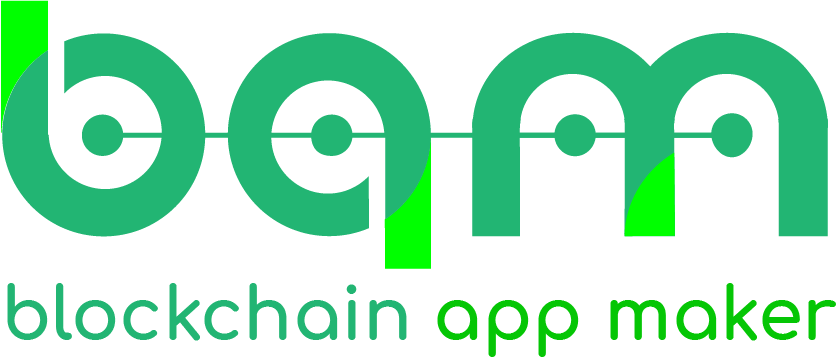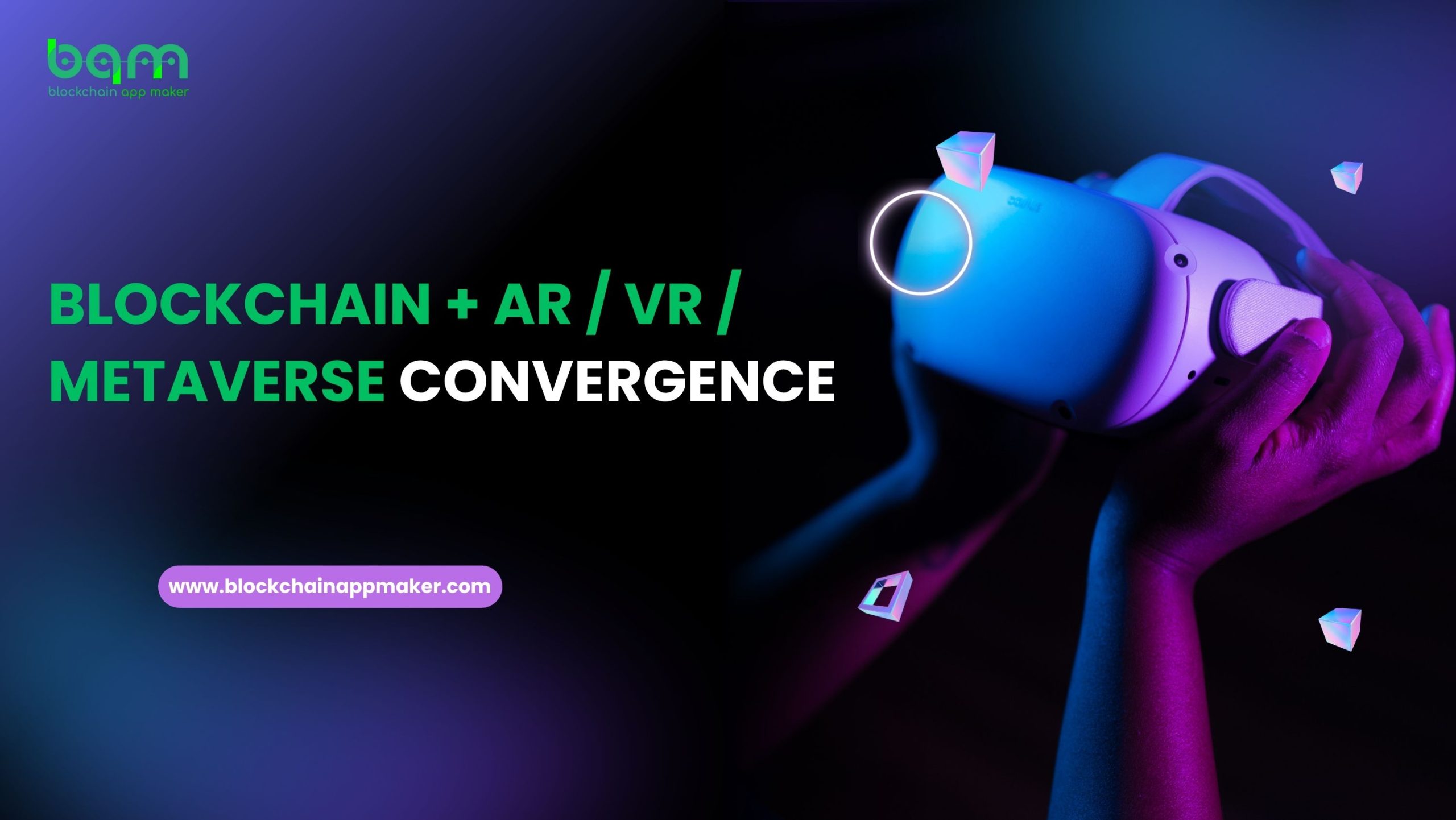Introduction: A New Digital Reality Is Taking Shape
As the technological world constantly remakes the way individuals shop, socialize, and interact with brands, 2026 represents a new horizon: the merging of blockchain, AR (Augmented Reality), VR (Virtual Reality), and the metaverse. It is not merely a technological trend but a movement that changes the principles of consumer experience, ownership, and trust.
In the case of U.S. brands, such convergence is an incredible opportunity. As consumers dedicate increasingly significant time in online spaces and require transparency, blockchain technology is emerging as the foundation that can guarantee authenticity and value in immersing ecosystems.
Forward-thinking enterprises are already collaborating with a blockchain development company in USA to create next-generation experiences that blend the physical and digital seamlessly — from AR try-ons to virtual storefronts, digital twins, and NFT-based loyalty programs.
The Power of Convergence: How Blockchain, AR, VR & Metaverse Intersect
Individually, all these technologies are transformational. However, together, they open up an ecosystem in which users can own, trade and experience digital assets in real time with verified authenticity.
- Augmented Reality (AR): Adds interactive overlay to the physical world – imagine AR-based visualizing of products, try-ons and immersive advertisements.
- Virtual Reality (VR): Develops complete experience gaming, entertainment, training, and shopping.
- Metaverse: This is an established virtual world, in which individuals communicate by using avatars, perform business transactions and develop their online selves.
- Blockchain: Provides transparency, ownership and interoperability of all these experiences.
When these technologies are combined, it produces a phygital (physical + digital) experience – a digital handbag, car, or even property can be verified, owned, and traded using blockchain and experienced in AR/VR.
To the brands, it is not merely innovation, but the building block of digital trust and engagement.
Why This Convergence Matters for U.S. Brands in 2026
This convergence is at the lead in the U.S. market. Statista estimates a total of more than 110 million Americans will access AR every month as early as 2026, and VR will have more than 70 million users. Meanwhile, by 2030 the blockchain industry in the U.S. is expected to be more than 70 billion dollar-based on enterprise and consumer uses.
Major causes why U.S. brands can no longer afford to overlook this change:
-
The Expectations of Consumers are Changing
Gen Z and Gen Alpha are seeking immersive and interactive, and this needs to connect the digital and physical worlds.
-
Authenticity & Provenance Count
Blockchain makes it possible to transparently verify the authenticity of products, and counterfeiting (particularly in luxury, art and collectibles) can be combated.
-
Novel Business Models Are Becoming
The memberships tied to NFTs, the loyalty programs that are tokenized, and the digital twins are opening new sources of revenue.
-
Competitive Differentiation
The customer engagement environment will be dominated by early adopters of blockchain-based AR/VR experiences.
Industry-Wise Transformation: Use Cases Across Sectors
1. Retail & E-Commerce
Retailers are incorporating AR in Virtual try-ons, 3D product display and store movement services. This is filled in by blockchain, which records ownership and the life cycle of digital assets.
Example: Loyalty points in the form of tokens that are redeemed online and at metaverse stores.
Result: Improved customer confidence, less fraud and more involved.
2. Fashion & Luxury
Luxury fashion labels are exploring blockchain as a tool of digital provenance and virtual try-on or fashion shows in AR. Buyers will be able to check whether a product (physical or digital) is authentic and of limited edition.
Example: Authenticity certificates of Gucci and Prada in the form of blockchain.
AR enables the customer to virtually put on products around them.
3. Automotive & Real Estate
Automobile brands apply VR to allow users to view cars virtually before buying them, whereas blockchain can confirm the genuineness of automobile parts and titles.
- AR/VR tours and blockchain-based tokenization of fractional ownership and title security are used by real estate developers.
4. Gaming & Entertainment
The gaming industry is on the forefront. NFTs and blockchain facilitate the actual ownership of the assets, allowing games to tax or buy in-game assets.
- VR worlds also foster a simulated experience of the game, whereas blockchain supports the digital economy and royalties.
5. Food & Beverage
This industry is adopting transparency, with the use of AR-enhanced packaging and blockchain-based effects on tracking supply chains.
- Using AR, consumers can scan a product to see its place of origin, sustainability rating, and freshness – confirmed on blockchain.
2026 Tech Stack: What’s Powering the New Digital Experience
For U.S. brands, embracing this convergence requires the right technological foundation.
Here’s the 2026 stack driving innovation:
| Layer | Technology | Purpose |
| Blockchain Networks | Ethereum, Polygon, Solana | Ownership, smart contracts, provenance |
| AR/VR Platforms | Apple Vision Pro, Meta Quest 3, Unreal Engine | Immersive experiences |
| Metaverse Platforms | Decentraland, Roblox, The Sandbox | Community and commerce |
| AI Integration | Personalized recommendations, predictive analytics | Data-driven experiences |
| Web3 Wallets | MetaMask, Coinbase Wallet | Secure digital identity and transactions |
By partnering with a blockchain app development company in USA, brands can seamlessly integrate these technologies — from smart contract creation to immersive AR/VR experiences.
Case Studies: U.S. Brands Leading the Convergence
Nike (RTFKT Studios)
Nike’s acquisition of RTFKT in 2021 paved the way for digital sneaker NFTs. In 2026, Nike continues to dominate the digital fashion landscape with blockchain-verified ownership and AR-based wearables.
Starbucks Odyssey
Starbucks’ NFT-based loyalty platform blends blockchain with immersive engagement. Customers earn “journey stamps” (NFTs) and gain access to exclusive experiences.
Walmart’s Metaverse Superstore
Walmart launched virtual shopping environments allowing customers to explore aisles, pick products, and check out using blockchain-secured digital identities.
Gucci & Balenciaga
Luxury fashion houses are using Roblox and metaverse platforms to host virtual runways and launch NFT collections — blending brand storytelling with digital ownership.
These pioneers showcase how blockchain and immersive technologies aren’t futuristic — they’re shaping consumer engagement right now.
Challenges and Considerations for U.S. Brands
The potential is enormous, and to implement these technologies, strategic foresight is required.
1. Regulatory Landscape
In the U.S., data privacy, laws of digital assets and IP rights are changing. The brands have to be compliant with SEC, FTC, and the regulations of the states.
2. Integration Complexity
The integrations of blockchain, AR/VR, and metaverse require cross-disciplinary skills, such as smart contracts and 3D content creation and 3D user experience design.
3. Sustainability
There is the concern of energy efficiency. Nevertheless, more recent blockchains (such as Polygon and Avalanche) are carbon-neutral.
4. Consumer Education
To become popular with a mass audience, brands need to make the user experience easier when onboarding a user, that is, have straightforward explanations of features such as wallet creation, NFT ownership, and AR features.
How a Blockchain Development Company in USA Can Help
In order to maneuver through this convergence, one needs to possess skills in more than one technology. Partnering with a trusted blockchain development company in USA like Blockchain App Maker ensures your brand stays ahead of the innovation curve.
The following is how this type of partnership brings success:
- Custom Blockchain Solutions: Smart contracts, NFT ecosystems, decentralized apps (dApps).
- AR/VR Integration: Web3-based immersive retailing and metaverse experiences.
- Cross-Platform Development: Fluid connectivity with key metaverse and e-commerce solutions.
- Regulatory-Ready Deployment: Assuring that the laws of the U.S. data and assets have been observed.
- Scalability & Security: High performance infrastructure to support expansion and consumer confidence.
In case your brand is seeking a combination of narrative, genuineness, and creativity – blockchain-powered AR/VR experiences will be your next competitive edge.
FAQs
1. What are real-world examples of blockchain and AR/VR integration?
Nike’s digital sneakers, Starbucks’ NFT loyalty program, and Walmart’s virtual shopping experiences showcase how brands use blockchain for authenticity and AR/VR for immersive engagement.
2. How can small U.S. brands leverage these technologies cost-effectively?
Start with NFT-based rewards, simple AR filters, or blockchain-verified supply chains. Partnering with an experienced blockchain app development company in USA helps reduce development costs through modular solutions.
3. Which blockchain networks are best for AR/VR projects?
Ethereum (for scalability), Polygon (for low fees and eco-friendliness), and Solana (for speed) are top choices in 2026.
4. Is the metaverse still relevant in 2026?
Yes — though the hype has stabilized, practical applications in retail, real estate, education, and events are expanding rapidly.
5. How does blockchain ensure authenticity in AR/VR experiences?
Blockchain records digital asset ownership and provenance, ensuring every virtual item or experience can be verified and transferred securely.
Conclusion: The Future Belongs to Immersive, Trust-Centric Experiences
The integration of blockchain, AR, VR, and metaverse technologies is transforming the relationship between the U.S. brands and the consumers. With the merging of digital and physical realities, the new economy is moving towards becoming a trust in itself – and blockchain is the foundation of that trust.
Brands that act now will define the future of immersive commerce in 2026 and beyond.
Ready to lead the next digital transformation?
Partner with Blockchain App Maker, a trusted blockchain app development company in USA, to build scalable, immersive, and blockchain-powered experiences that captivate your audience.
Book a Consultation Today and step confidently into the future of brand engagement.




